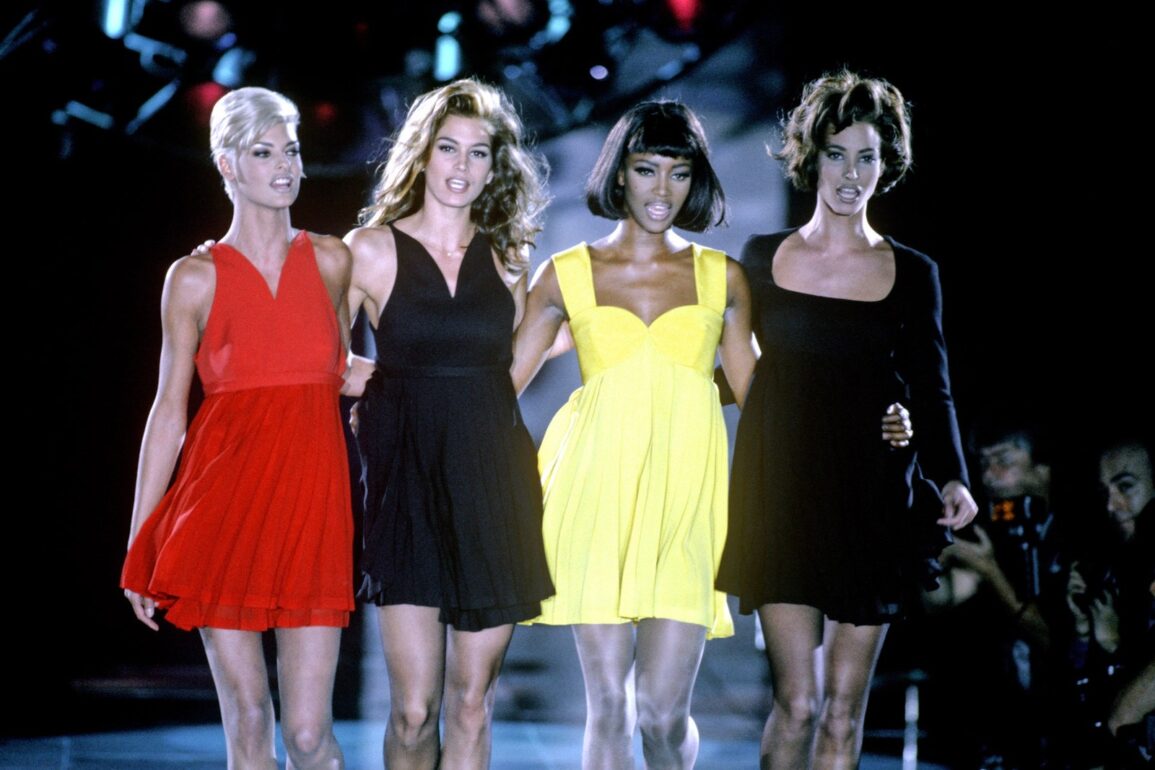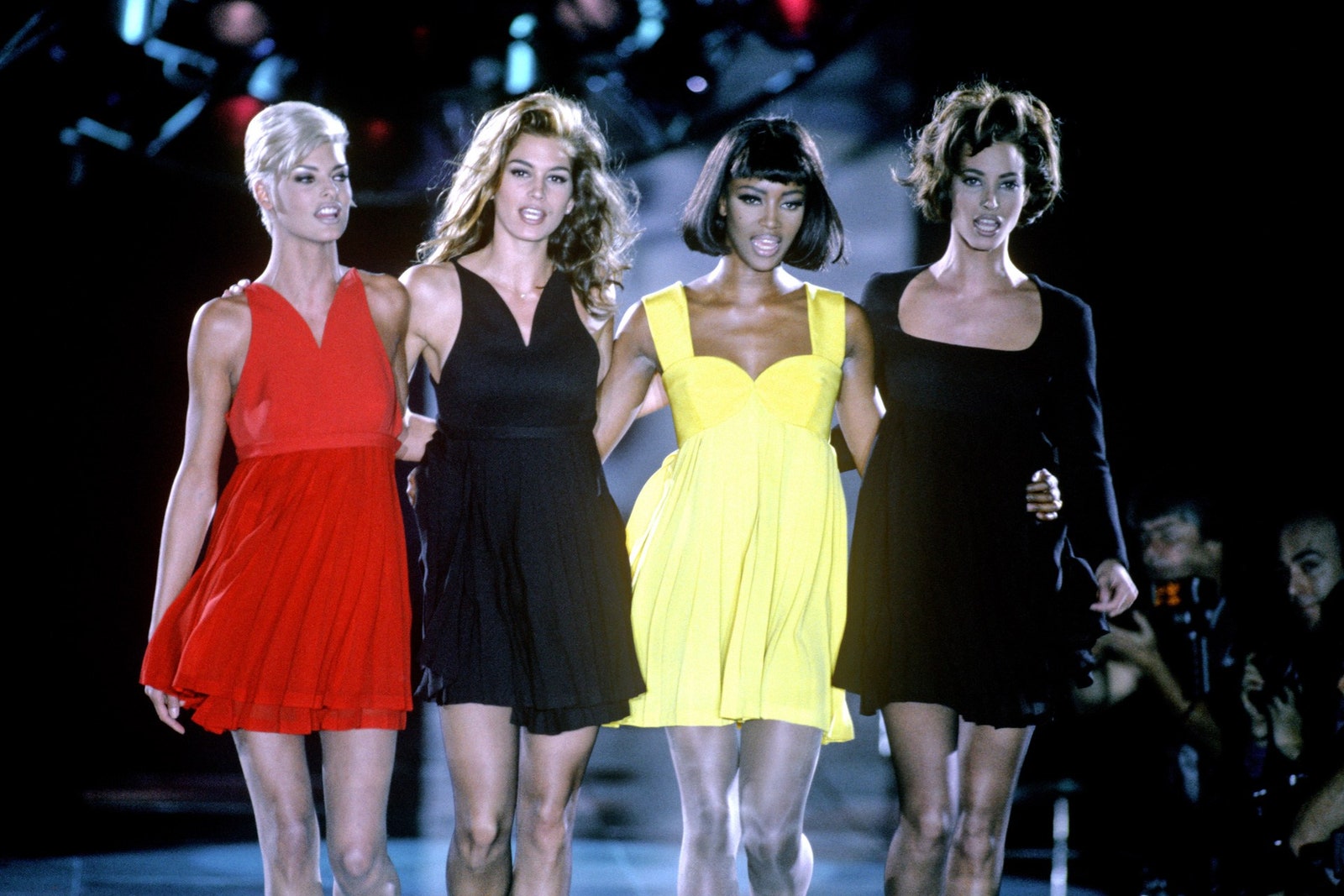In Apple TV+’s four-part docuseries The Super Models, directors Roger Ross Williams and Larissa Bills take us on a whirlwind ride through the ’80s and ’90s as we witness the rapid rise of four era-defining supers: Linda Evangelista, Cindy Crawford, Naomi Campbell, and Christy Turlington, the formidable quartet who recently reunited to appear together on the cover of Vogue’s September 2023 issue.
Through archival images, footage, and extended sit-down interviews with the women themselves, as well as their closest friends and collaborators, we hear about their complicated early lives, how they were scouted as teenagers, and the hardships they faced as they tried to break into a fiercely competitive industry. Soon, all four were runway regulars in New York, and a fateful series of events—a joint appearance on the cover of British Vogue’s January 1990 issue, a stint lip-syncing in the music video for George Michael’s “Freedom! ’90,” and a coordinated strut down the Versace runway—sent them stratospheric, heralding the birth of a new kind of supermodel, a woman who has personality and strong opinions rather than being a blank slate on which a designer can project their fantasies.
But, thankfully, the series doesn’t end there—instead, it documents their ever-increasing power within the fashion world; the backlash that followed from designers and editors who resented the outsized influence they wielded; the emergence of grunge and a rejection of the glamour the supers embodied; and, eventually, their return to prominence, as they continue working well into their 50s and reflect on their collective legacy.
Below, we present our 13 biggest takeaways from The Super Models, from Linda opening up about the heartbreak of her first marriage, to the steps Cindy took to secure her future from the very beginning.
Naomi was born an icon
The first episode of The Super Models examines the quartet’s childhoods, and while all four were adorable toddlers, none can top Naomi. As a child, the Londoner was a keen performer—we see a clip of her as a precocious eight-year-old, asking to play Snow White or Cinderella, and later appearing in the music videos for Bob Marley’s “Is This Love” and Culture Club’s “I’ll Tumble 4 Ya.” It wasn’t all fun and games, though. “My mother sent me to this private school, and I was called the N-word when I was five,” Naomi says. “I wasn’t going to accept being bullied at school for the color of my skin. My mother was paying my school fees just like everybody else’s. I had every right to be there, so I was like, go take your bullying somewhere else.”
This post was originally published on this site be sure to check out more of their content.










